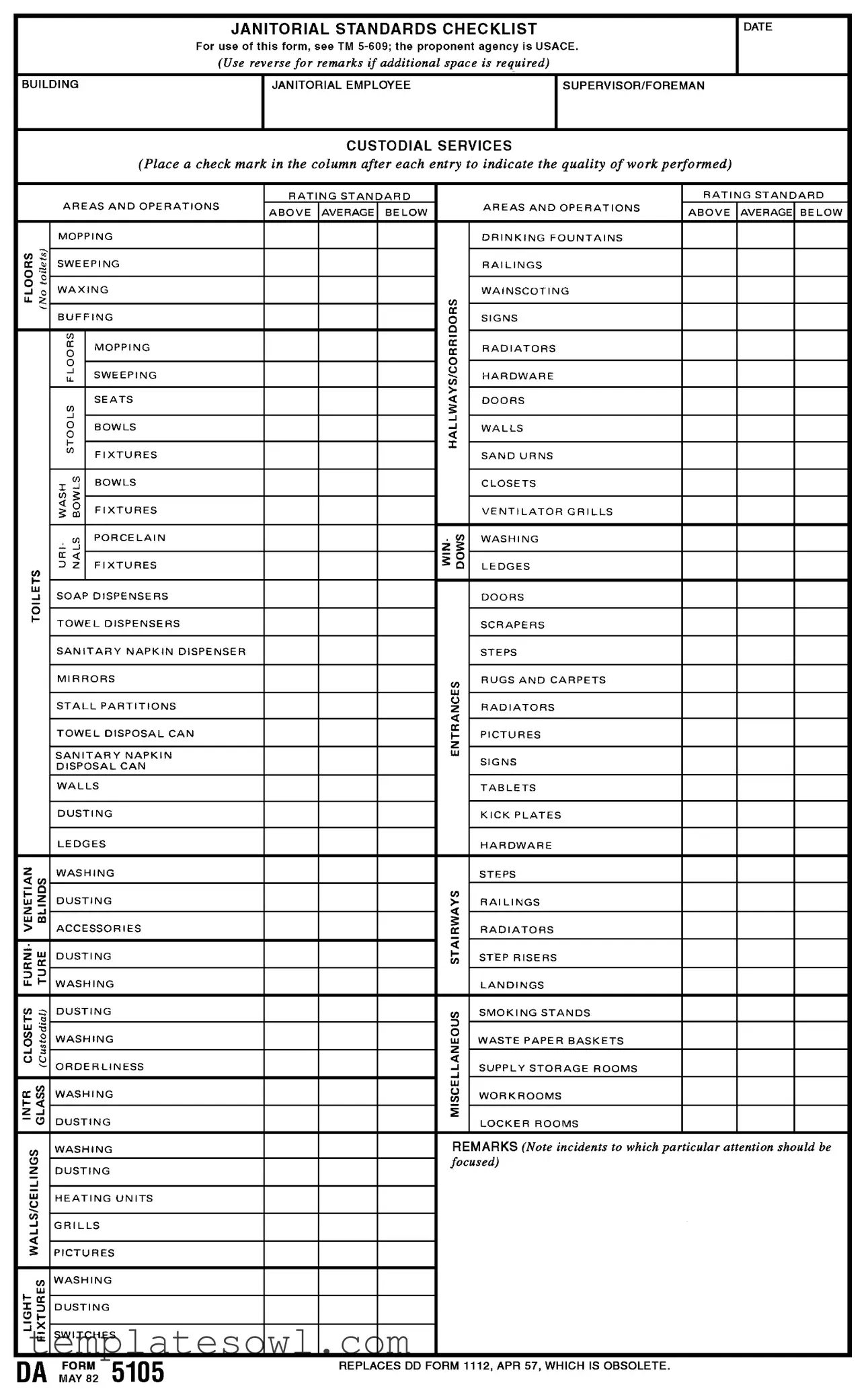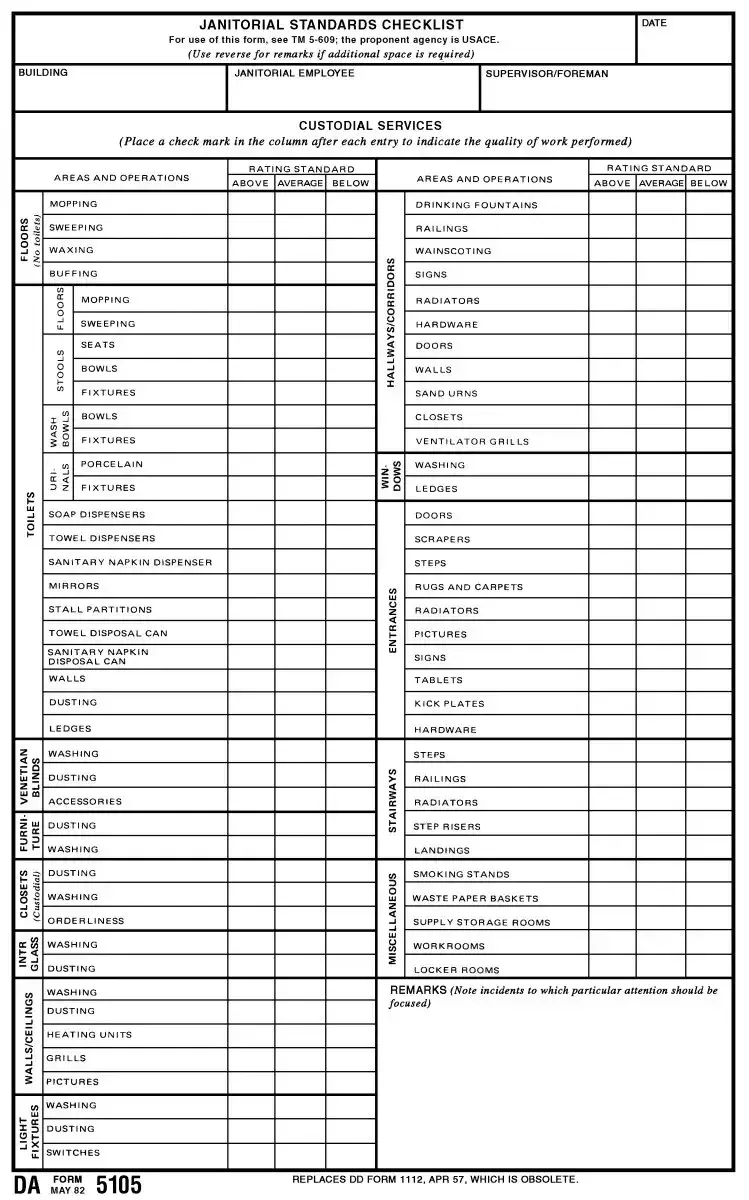What is the purpose of the Janitorial Checklist form?
The Janitorial Checklist form is designed to ensure that custodial services meet specific cleaning standards within various facilities. It provides a systematic way to evaluate the quality of work performed in different areas, such as restrooms, common areas, and office spaces. By using this form, building management can identify areas that need improvement and recognize high-quality performance.
Who should use the Janitorial Checklist form?
This form is intended for use by janitorial staff, supervisors, and facility managers. Janitorial employees will complete the checklist to track their cleaning tasks, while supervisors can use it to assess the quality of work and provide feedback. It serves as an important tool for maintaining cleanliness and addressing any concerns in a timely manner.
How is the Janitorial Checklist form structured?
The checklist is organized into different areas of operations, each requiring specific cleaning tasks such as mopping, sweeping, or dusting. Each task has corresponding columns where employees can mark the quality of work performed. Additionally, there is space for remarks to note any incidents or areas requiring extra attention.
How often should the Janitorial Checklist be completed?
The frequency of completing the Janitorial Checklist can vary depending on the facility's needs. Generally, it should be filled out after each cleaning shift or daily to ensure an ongoing assessment of cleanliness. Adjustments may be made based on the specific requirements of the building or feedback from management.
What are the rating standards included in the checklist?
The Janitorial Checklist features a simple rating system: Above Average, Average, and Below Standard. This system allows supervisors to quickly assess performance and identify areas that may need improvement. Ratings are based on the cleanliness and orderliness of various areas as indicated by the janitorial staff.
Can additional comments be added to the Janitorial Checklist?
Yes, the form includes a section for remarks on the reverse side. If there are specific incidents, areas of concern, or suggestions for improvement, custodial staff and supervisors can document these to facilitate better communication about cleaning performance.
What happens if an area receives a "Below Standard" rating?
If an area is rated as "Below Standard," this signals a need for immediate attention. Supervisors can address the issue by discussing it with the janitorial staff, implementing additional training if necessary, or adjusting cleaning schedules. The goal is to ensure that all areas are maintained to an acceptable standard.
How does the Janitorial Checklist contribute to overall cleanliness?
The consistent use of the Janitorial Checklist promotes accountability and helps maintain high cleaning standards across facilities. By providing a clear outline of responsibilities and evaluating performance, it encourages janitorial staff to adhere to best practices, ultimately enhancing the overall cleanliness and safety of the environment.

